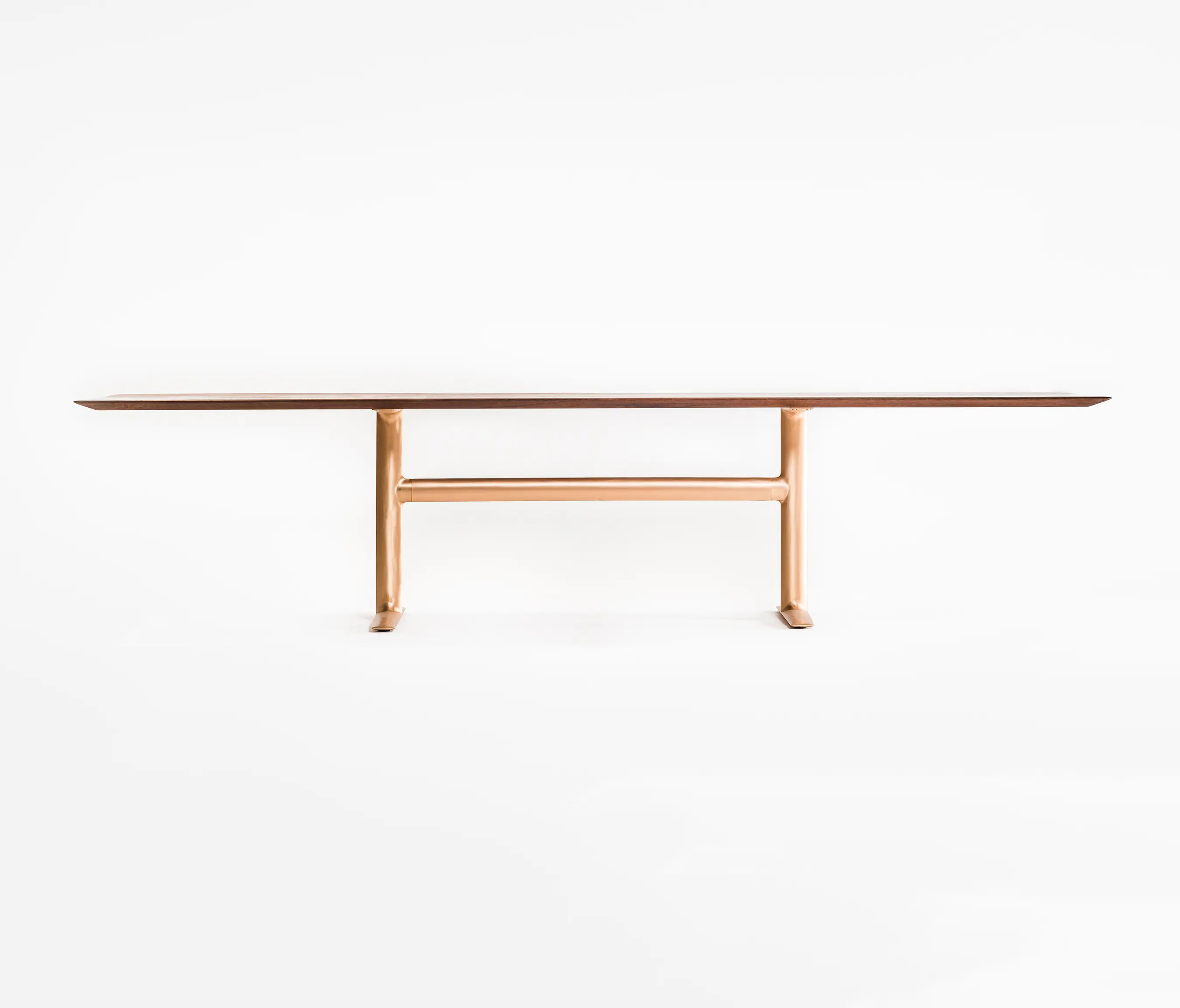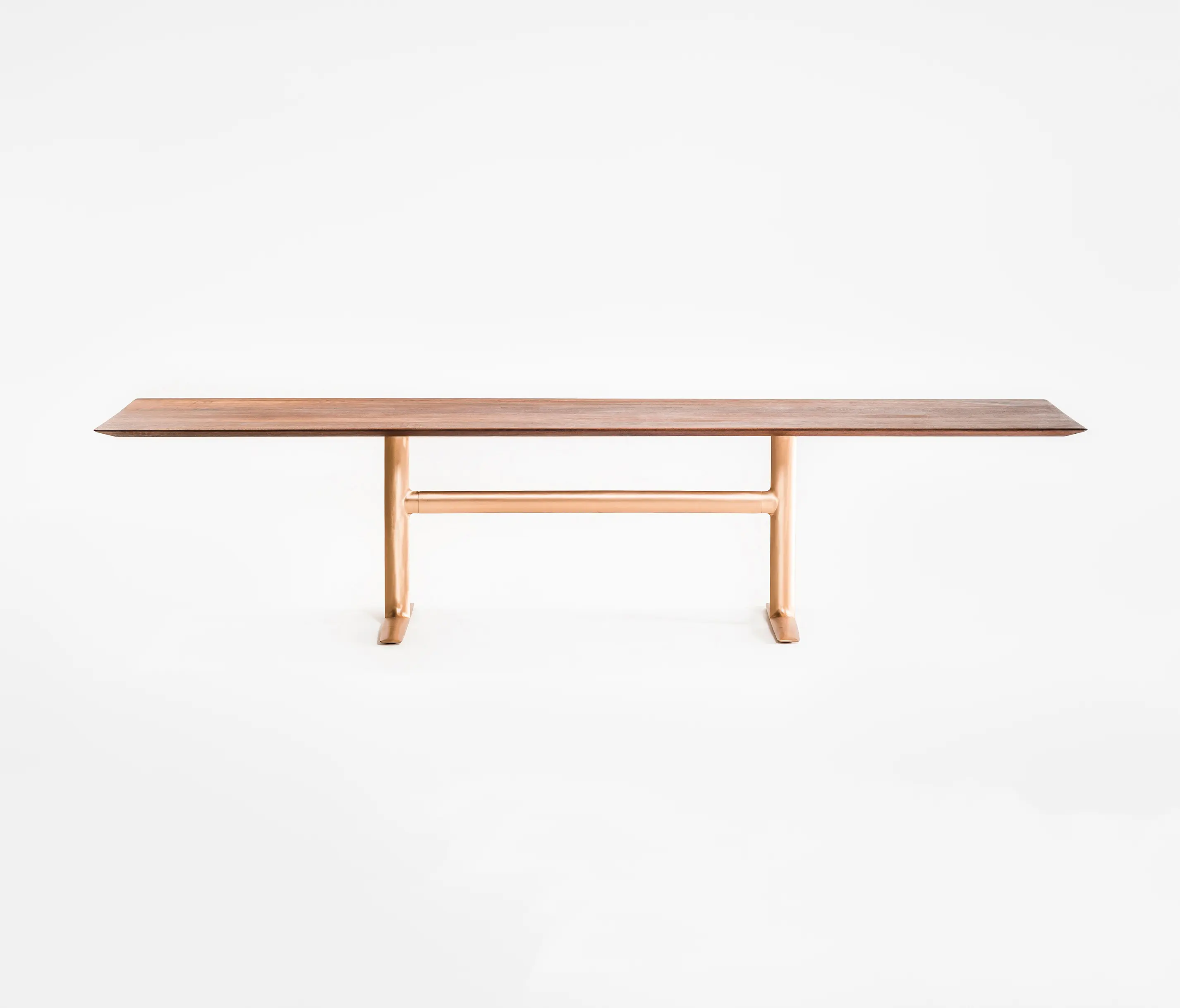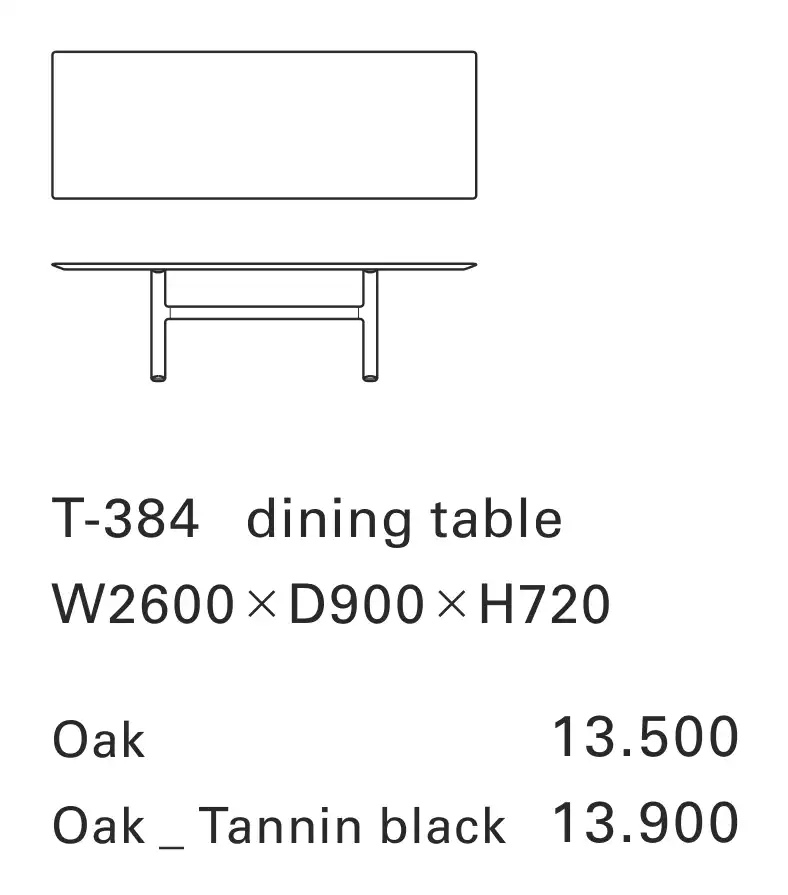Share



Bridge across
Share
- Home/Dining tables/
Bridge across
About this product
Architonic ID: 20085932
SKU: T-387
Year of Launch: 2014
W3200×D900×H720
Concept
The Bridge across is a table with bronze (copper) legs and a wooden tabletop. The bronze legs have a simple structure so it does not obstruct the chairs. Also, to construct the table with simple parts, sand-casted parts are used to join the ellipse supporting post for the legs and bottom legs with the wooden tabletop. For the legs, the same original sand-cast mold is used. The same original mold is used for both legs, and the ellipse crosspieces connecting the two legs are joined together with the legs using spigot joints.
This Bridge across table is characterized by its efficiently structured bronze casted legs, and the volume of bronze used is reasonable while achieving a sense of stability and simplicity as a table. We wanted to use bronze to design a table with a simple design and structure with a light feel without a sense of heaviness. No table legs were made with bronze and brass casting in the past. In most cases, metal table legs are created by bending existing standard-shaped metal pipes for welding. Recently, legs for tables and sofas are made by bending or cutting a solid metal board with a laser. Thanks to its cultural background, Japan is the only country capable of creating large products by metal casting. Japan has the techniques and factories for making Buddhist altar items and statues one by one by hand even today. The legs are produced by a sand casting manufacturer in Takaoka, Toyama. The sand casting is unique because of the process of placing an original mold in a box and then filling the box with sand. The original mold is carefully removed from the sand, and then the same mold is made for both the male and female dies. Each box is made by putting together a male die. Molten bronze or brass is poured into the box. Once the metal solidifies, the external sand mold is destroyed and the metal poured into the sand mold fills the gaps in the original mold to make the casting. For casting, since molten metal is poured into a mass of sand called sand casting, it leaves grainy traces of sand on the surface. This is called the casting surface, which is a unique feature of a sand mold. Because oxidation occurs when metal cools, a cloudy color forms and the casting surface has no luster. The metal then goes through the process of polishing the finished casting to add shine. During the process of buffing, the sizes of the grains for grinding down the surface result in different luster levels in the finish. By gradually increasing the polish level from a rough finish, the surface is polished to a radiant mirror finish and processed to add the streaks of hair, called the hairline, to the surface. The finished method and buff level are changed to adjust the appearance to meet the nuances of each product.
The Bridge across table is finished with a thin clear lacquer to enhance the expression of the bronze and to ensure that the natural secular changes unique to bronze are beautiful. This leaves room for slow changes in the years to come. Since the joints that connect the two legs require precision, subtle adjustments are made to the finished mold by machining. The artisans in the factory pay attention to the details so that the joints are uniform with no defects. The specific gravity of bronze is heavier compared to other metals for furniture. For this reason, the major appeal is its stability compared to other metals even in small sizes. When the specific gravity for aluminum is 2.7, for instance, that of bronze is 8.9, which is about three times heavier. Compared to steel with a specific gravity of 7.8, bronze offers the highest stability compared to other metals for furniture. Using bronze’s characteristics, we offer a lineup of long tables up to 3,200 mm in width for the tabletop. The large, long, heavy solid board cannot be supported with small legs, which is why we use bronze legs with a heavier specific gravity. In addition, bronze shows a greenish, bluish rust like a 10-yen coin over time. The copper rust of the materials creates a tasteful expression similar to that of bells and Buddhist statues in a temple. This rust surely reflects Japan’s aesthetic sense. The surface of bronze is burned at a high temperature after brushing on Japanese lacquer to add depth to the lacquer and luster to the brown color to create a beautiful finish.
This product belongs to collection:













